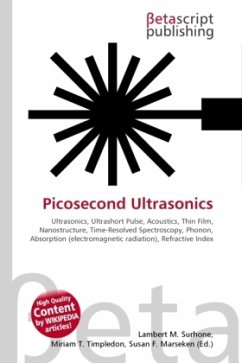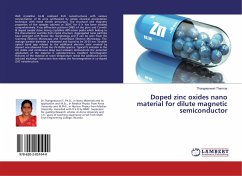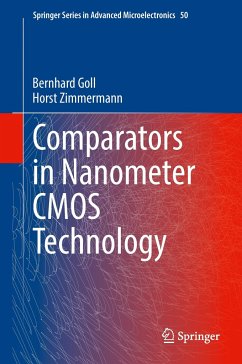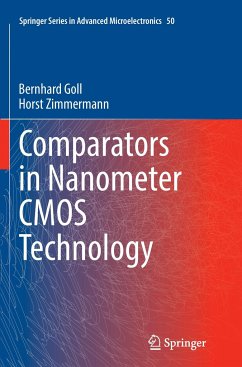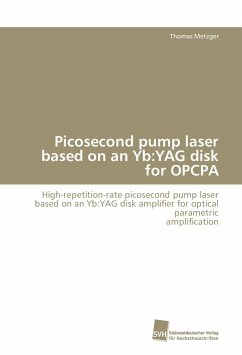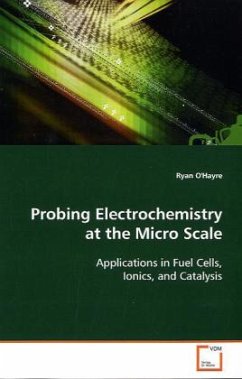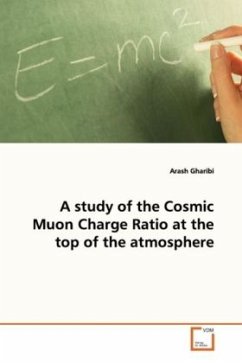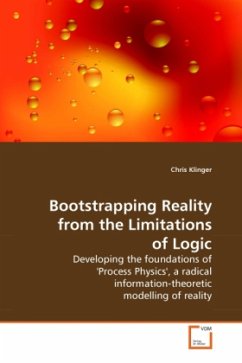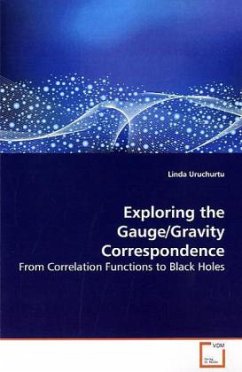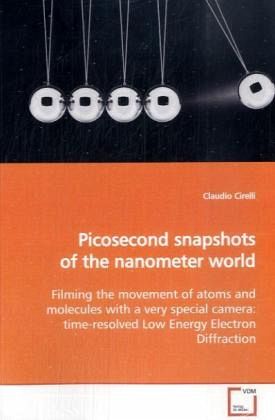
Picosecond snapshots of the nanometer world
Filming the movement of atoms and molecules with a very special camera: time-resolved Low Energy Electron Diffraction
Versandkostenfrei!
Versandfertig in 6-10 Tagen
32,99 €
inkl. MwSt.

PAYBACK Punkte
16 °P sammeln!
In order to observe phenomena on the molecular level,it is necessary to develop a technique that issensitive to all the microscopic spatial degrees offreedom on the time scale of the molecular processes.For the case of surface physics, the standard toolfor structure determination isLow-Energy-Electron-Diffraction (LEED). Thistechnique, endowed in a so-called 'pump-probeexperiment' framework has the potential to follow inreal time the excitation and the relaxation dynamicsat surfaces on the picosecond time scale (1ps=10^(-15) s). This book describes the realizationof the first proof-of-principl...
In order to observe phenomena on the molecular level,
it is necessary to develop a technique that is
sensitive to all the microscopic spatial degrees of
freedom on the time scale of the molecular processes.
For the case of surface physics, the standard tool
for structure determination is
Low-Energy-Electron-Diffraction (LEED). This
technique, endowed in a so-called 'pump-probe
experiment' framework has the potential to follow in
real time the excitation and the relaxation dynamics
at surfaces on the picosecond time scale (1
ps=10^(-15) s). This book describes the realization
of the first proof-of-principle experiment for
time-resolved LEED
(t-LEED). The design, realization and
characterization of a home-built electron gun is
presented: with such a tool, a temporal resolution of
few picosecond was achieved. First experiments were
performed to track in real time phase transitions
occuring on surfaces and dynamics of the so-called
space-charge effect: the emission of electrons on a
metal surface by an intense pump pulse via
multi-photon absorption processes.
it is necessary to develop a technique that is
sensitive to all the microscopic spatial degrees of
freedom on the time scale of the molecular processes.
For the case of surface physics, the standard tool
for structure determination is
Low-Energy-Electron-Diffraction (LEED). This
technique, endowed in a so-called 'pump-probe
experiment' framework has the potential to follow in
real time the excitation and the relaxation dynamics
at surfaces on the picosecond time scale (1
ps=10^(-15) s). This book describes the realization
of the first proof-of-principle experiment for
time-resolved LEED
(t-LEED). The design, realization and
characterization of a home-built electron gun is
presented: with such a tool, a temporal resolution of
few picosecond was achieved. First experiments were
performed to track in real time phase transitions
occuring on surfaces and dynamics of the so-called
space-charge effect: the emission of electrons on a
metal surface by an intense pump pulse via
multi-photon absorption processes.



